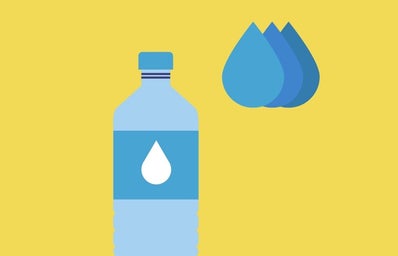The truth behind the “Brita Bitch”
Contrary to my “I eat healthy” mindset, I never drink water. I shouldn’t say never, but usually only on the rare occasion when one of my beverages of choice, either an iced vanilla latte with oat milk or an iced chai tea latte, are not available. However, when I do decide to indulge in a glass of water, I would like that water to taste refreshing. As a freshman in college, I now realize this is a task that not every water fountain is able to accomplish. Especially the water fountains in my dorm. The result? I have turned into a Brita bitch.
Going into college, I didn’t think I was destined to end up an owner of a Brita. I thought that twelve years of public school water fountains would have prepared me for whatever subpar water was offered in the water fountains of my dorm. However, the distinct mental taste that accompanied the water coming from the fountain was simply too much and I had to draw the line. One week into living in the dorms, my roommate and I threw in the towel and ordered a Brita from Amazon.
Although I used Amazon’s esteemed one day delivery service, the two-week period from when I ordered my Brita and when it actually arrived left me loads of time to overthink the water I was consuming. I started to become particularly alarmed by the thick, murky-looking water that left me thirstier than I was before I drank it. At last, I received the glorified notification that I got a package and, sure enough, it was my Brita.
It was love at first sight. The Brita came already put together. All I had to do was put the filter in the pitcher. I immediately put my Brita to work, taking it straight to the water fountain. Approximately twenty minutes later, my Brita was filled. Now, the moment of truth: The taste test. It was life changing. I was suddenly drinking water that left me feeling refreshed and didn’t even taste remotely like metal.
I was sold and ready to go rave to all my other Brita-owning roommates about how fantastic our water filter was. It never occurred to me to research if or how this Brita worked. To my surprise, when I googled, “does the Brita filter work” immediately the first words I saw bolded on the page were “not really.” When skimming the article “Know the Facts: Do Brita Filters Work?” I found that, in short, “a Brita reduces the contaminants of chlorine, copper and lead, but it does not remove them. Therefore, they’re still in your glass of water” (Carpenter, 2020). I scrolled further down in my search and was met with even more negativity about my beloved Brita. I found that Brita filters mostly just get rid of chlorine. Another article bluntly declared “Brita filters are mostly cosmetic” because “they deal mostly in surface-level odor and taste, and not in eliminating all of the actual toxins” (The Good for Company). Incredibly disappointing news.
Although that all may sound unpleasant, I went to the Brita website where it reassured me that their product does have a sound process of filtering my water. The water in a Brita first “flows through a built-in mesh screen that prevents black flecks” (Brita). And then “activated carbon granules act like a sponge to reduce mercury and chlorine taste and odor” (Brita). That sounds like some pretty filtered water to me.
My two cents on the Brita debate are to give in and buy one. Even if there isn’t too much sound science to back up what the Brita actually accomplishes, it tastes better and therefore makes you feel better, which is enough to trick your brain into thinking the Brita is accomplishing something. So yes, you will continue to see me standing at the water fountain for twenty minutes to fill up my Brita, and I hope to see you doing the same.


